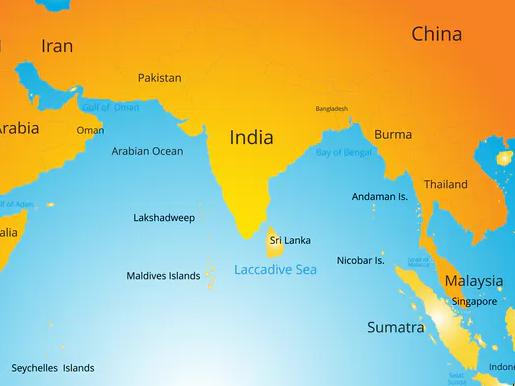Over 120 warships of extra-regional forces are currently deployed in the Indian Ocean Region in support of various missions, Chief of Defence Staff Gen Bipin Rawat said on Friday, referring to increasing maritime presence of various countries in the strategic sea lanes. Delivering the keynote address at the Global Dialogue Security Council, Gen Rawat said there has been a “race for strategic places and bases” in the Indian Ocean Region (IOR) which is only going to gain momentum in times to come.
The Chief of Defence Staff said an increasing number of countries are focusing on the IOR considering its geo-strategic importance. “Most of the countries in the region are seeking to reap the economic dividends through improved connectivity and harassing blue economy for which infrastructure is a prerequisite. Residents’ powers and extra-regional power have shown a renewed interest in investing in infrastructure development in these countries to maintain and increase geopolitical influence,” said general Rawat.

Speaking on the theme of “contesting the Indo Pacific for Global Domination”, CD Rawat said “In recent years, China’s economic and military rise coupled with competition to increase the influence in the region has attracted a great deal of interest. At Present, there are over 120 warships of extra-regional forces deployed in the Indian Ocean Region in support of various missions. Till now, the region, by and large, has remained peaceful albeit under contestation. In the military field, technology must be a means of deterrence and not a source of destruction. Our approach to security hence needs to shift from unilateral to the multilateral mode which mandates increasing training engagements with partner nations in order to fortify the future.”
He further said that governance and security are under constant threat of being undermined by non-state actors and also naval competition among the states. “Governance and security are under constant threat of being undermined by non-state actors and also naval competition among the states. To protect peace, prosperity and sovereignty it is important for us to keep a sea line of communication secure at all times with a stronghold on the security dimension of this region,” general Rawat said.
Importance of IOR

The Indian Ocean has emerged as a critical channel for trade, commerce, and energy, writes Priyanjoli Ghosh in the Journal of Indo-Pacific Affairs. The Indian Ocean Region (IOR) has fostered economic developments and has also given rise to disputes and competition for regional influence by regional and extra-regional powers. Apart from India, major powers, such as the United States, Australia, Japan, United Kingdom, and China have sought presence and stakes in the IOR says the author.
Being the busiest trade route, Indian Ocean remains a pivot as around 80 percent of the world’s maritime oil trade passes through this ocean. The rise of China across the maritime region has compelled nations (including India) to reshape their maritime strategies. During the Cold War, the Soviet Union wanted direct access to the IOR and now China is looking for the same.
The Indian Ocean lies at the crossroads of Africa, Asia, and Australia, with many bases which can play critical roles in the region. The IOR is a vital sea lane with choke points such as the Strait of Hormuz, Strait of Malacca, Bab-el Mandeb, and so forth. These choke points are of immense strategic importance, as huge volumes of trade pass through them. These choke points are exposed to piracy, international disputes, political dissents, and accidents. To ward off such threats and to gain/maintain a strong foothold in this resource rich region, regional and external powers flex their muscles.
In order to strengthen itself in the region, India has increased its military capacity so that it can operate in the entire region—from the Malacca Strait to African coasts. In the wake of the COVID-19 pandemic, when the world order is expected to witness a geostrategic shift, India will aim at further strengthening its presence in the IOR writes Priyanjoli Ghosh in her commentary. In this dynamic, India will look forward to building up the gambit with Indian Ocean littorals such as Sri Lanka, Maldives, Mauritius, and Seychelles to scrutinize the rise of China. India is also likely to develop a strategic plan with the United States, without overtly professing such measures as “anti-Chinese moves.”
